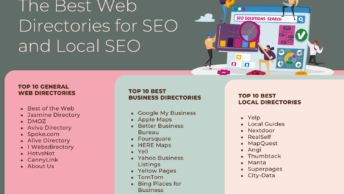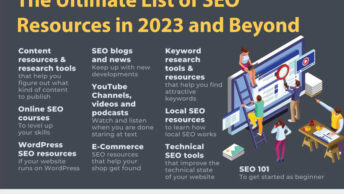You have your own blog, right? This may be pretty basic stuff we are covering, but scroll down a bit and we have a couple of tips that may even help you experienced bloggers.
But, first, some advice for those of you who have been thinking about starting your blog, but haven’t taken the plunge. Let’s cover some basics, shall we?
For the Newbies
For you newbies, I’m going to go through a basic checklist, but what you should really do is use a guide to starting a blog (like the one from onblastblog) and work through the process, step-by-step.
Decide on the Platform
You thought that I was going to suggest blog content, first, didn’t you? Well, actually, because of the amount of work it takes to move content around, after the fact, I’m going to suggest that you decide what platform you want to use. Granted, you don’t have to be married to your decision, so you can change your mind later. However, it is much easier if you happen to pick the one you want right from the start.
I was just about to make a list for you, but I found a great article that lists 18 different choices and provides you with the pros/cons. It also lists some of the formerly popular blogging platforms (like Google’s Blogger) that are no longer recommended and listed as “dead.”
That article is “The 18 best blogging and publishing platforms on the internet today” published by The Next Web.
Domain Registration
Free blogging websites (platforms) along with their site; host a particular domain name, which incorporates your name (or profile name) into the web address (URL) of your particular blog. In some cases, these sites offer you the opportunity to register a domain name through them. When they offer that, they are acting as a domain registration service (like GoDaddy).
If you are planning on taking this blogging thing seriously, it is recommended that you get your own domain, whether you register through the free service offer, or go straight to your favorite domain name registration service provider. That way, it is easy to point people to your blog, and it helps on those business cards.
Define the Blog Niche
To increase your chances of managing a successful blog, experts suggest that the beginners define their objective and set their goals based on that objective. Expert bloggers suggest settling on a limited topic area, known as a “niche.”
Speaking from experience as an expert blogger, I have to agree. When I first started, I wasn’t sure what I was supposed to write about and wrote about a specific topic for each day. I soon realized that I did not know how to describe my blog as it had a little bit about music, jazz, art, psychology, and social media marketing. So, I split it out into multiple (separate) blogs. That soon grew to 25 blogs. Ok, I don’t recommend you do what I did, in the quantity of blogs, but it is recommended that you figure out what you want to blog about and define your niche.
Image Strategy
Put simply, you do not want 500k images on all of your blog posts. Your website will take forever to load! It is helpful if you figure out your image strategy (where you are going to get your images and how you are going to edit/resize the images).
Some of your options are:
- purchase the license for the images (i.e. 123rf.com);
- obtain them free (be very, very careful on this one!);
- create them yourself (including screen captures).
Some options for editing include:
- Free software for your computer;
- Hiring someone to edit your images (including fiverr.com);
- Using a free online tool like Canva.
Personally, I recommend purchasing the license for the images, like 123rf.com with a combination of creating images yourself. Be careful with the screen captures. Technically, you need the permission of the website that you are capturing, so just be careful. As far as Flickr and “free images,” it is possible that you get caught in a situation where that image was not free for the giving. In that case, you will have lawyers coming to you insisting that you pay a “use” fee that is much more than it would have cost to use a site like 123rf.com. As in, compare 38 cents per image to $3,800 for the use fee.
As far as editing, I highly recommend using Canva to create your own compilations and use images that you have the rights to use, along with adding text. The only thing that Canva doesn’t really do is resize the images. Fortunately, there are some WordPress plugins that can handle that for you, too.
Content Strategy
Numerous individuals essentially blog about what is pertinent in their lives. If all else fails, keep it short. Individuals typically get a kick out of the chance to filter for points that are vital to them. Use word tags to visitors filter through your posts.
Rather than posting blog entries by date, utilize the free alternatives to sort them by topic. Each post can include different topics. These are called “categories” in the WordPress platform.
Each blogging stage gives you the chance to relate distinctive keywords with your post, and this is SEO (Search Engine Optimization) tagging. There are also some helpful SEO WordPress plugins to help you optimize the SEO and the ability to be found by new visitors.
Check out some of the expert tips, below, for content suggestions. You also need a content strategy, but we will leave that for another time, so you can percolate on what you have learned so far.
For the Existing Blog
Here are just a few tips to stimulate some creative thinking and strategy for you expert bloggers.
Tip #1: Grow Your Team / Grow Your Content
This tip is from Gail Gardner, of GrowMap.com. She has an excellent idea for growing a collaborating team of bloggers who help each other out and keep that content flowing. And, I’ve tried it. It works!
The how-to is described here: “Guest Blogging: Five Blog Schedule.”
Don’t let the phrase “Guest Blogging” scare you away from this strategy. It is actually very effective.
Let’s say that you were already planning on blogging a certain number of times on your blog. By using Gail’s strategy, you are actually becoming a “columnist” on four other blogs and accessing the audience of four other blogs (growing your notoriety). In return, you receive columnist posts (another phrase to replace guests blog posts), and this adds other “voices” to your blog, making it more appealing and heading toward a more engaging blog. How does that sound?
Tip #2: Watch What Happens at MyBlogU
Ann Smarty is an idea-generating machine. How do I know? Because I’ve worked with her, most recently at Internet Marketing Ninjas. I’ve watched her work! The following is a video where Ann, herself, talks about how MyBlogU works and how it can help you create crowd-sourced ideas and content for your blog. Even if you have 100 ideas in mind right now, there will come a time when you need some help, and that is where MyBlogU comes to the rescue. The best way to learn the “how” is to sign up for a free account and jump in and use it. There are also links on her site for the free Udemy course to learn how to use the free tool step-by-step.
Tip #3: Get Mobile!
Are you mobile? I hope so! After all, earlier this year, Google announced that that was going to be very key in the SERPs (search engine results page). Here are tools to help you see if you are already there, and to help you see where you need improvement.
Are you mobile ready? Check here, in Google’s mobile-ready checker tool.
A couple of sites where you can see what your site looks like in multiple devices (free) are:
MobileTest.me allows you to see what your website looks like on a few devices, for free, but you need to pay to get the view on more devices. At this point, I don’t see any pricing on the Ready.mobi, but I wouldn’t be surprised if that occurs in the future. Speaking of Ready.mobi that is the one that I recommend. It shows you where there may be mobile page loading issues and what you need to fix. The analysis is very helpful!
Conclusion
If you are new at this blogging thing, the research and working through the process step-by-step is very essential. If you are more experienced, it is about finding a strategy that works for you. Find that edge. Find that angle. There are some tips that work for everyone, and there are some who only work for a few. You need to find what works for you and your blog.







